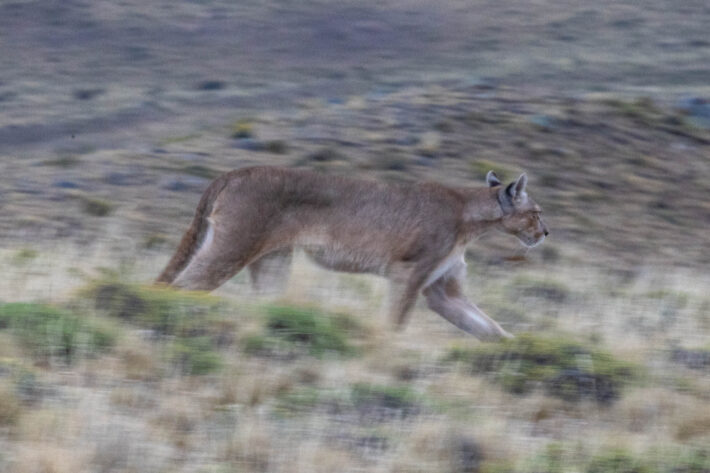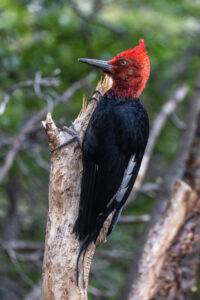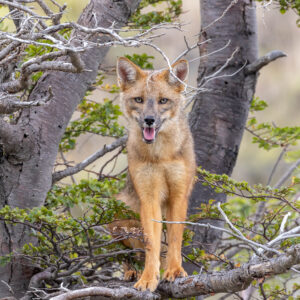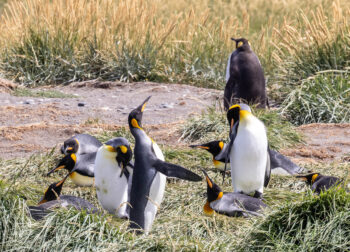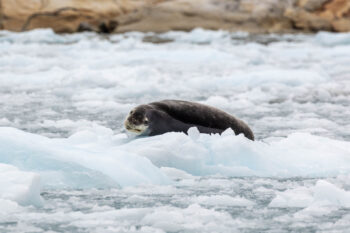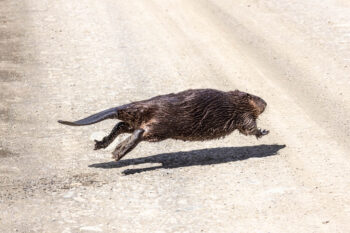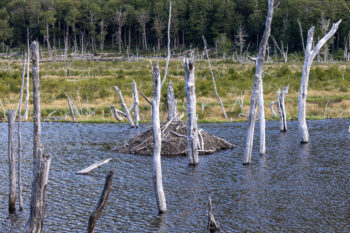Mountain lion, puma, cougar, panther, catamounts —this cat is known by more names than any other mammal (40 in English alone)! But no matter what you call it, it’s still the same cat, Puma concolor, the largest of the “small cats.” So how did it get so many names? Mostly because it has such a large range, and people from different countries have called it different things. …“Puma” is the name the Incas gave this cat in their language.” Since we were are the bottom of South America we called them what the locals did – puma, though they do look a lot like African lions.
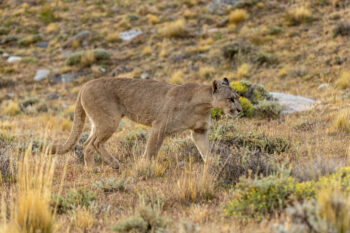
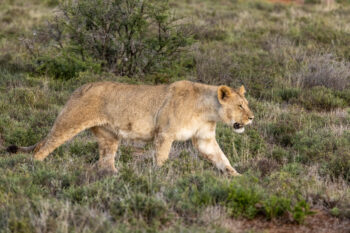

Mountain lions (pumas) have a bad reputation
While Pumas are wild, the reputation as dangerous is overblown. Where we were (Torres del Paine Chile) there haven’t been any fatal attacks in modern history. If you treat them with respect, don’t run like prey but stand your ground like a predator, your chances of being attacked are less than being hit by lightening. So when this one came within 15 feet of me, this advice kept my heart rate at an acceptable level, and as you can see it had zero interest in me
The key reason was because I was acting a fellow predator, staying still, and not like prey, running. Because if you run, you end up like this poor guanaco.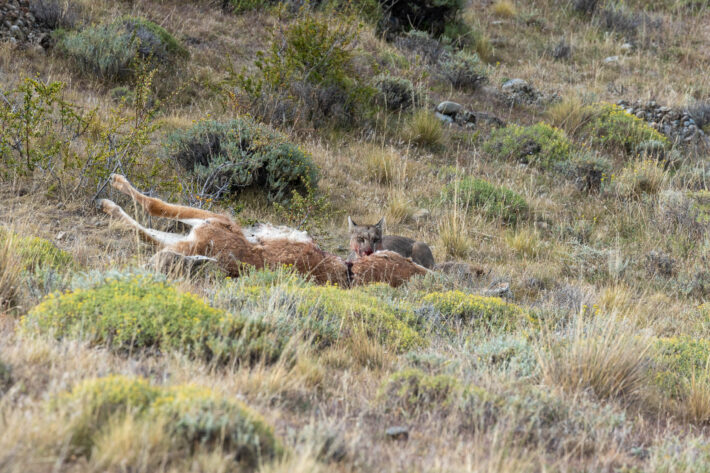
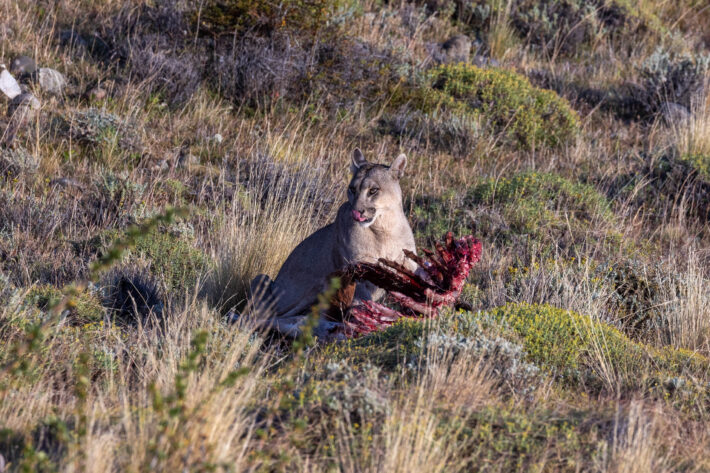
The guanaco is South America’s camel and related to the llama.
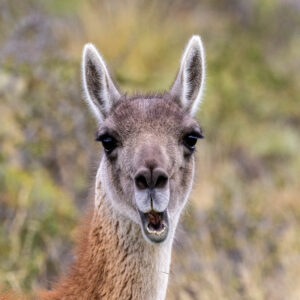
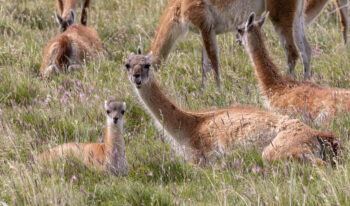
They are the puma’s favorite food and can be found all over Torres del Paine. In fact, one of the iconic shots in the area is the guanaco on a hill rise:
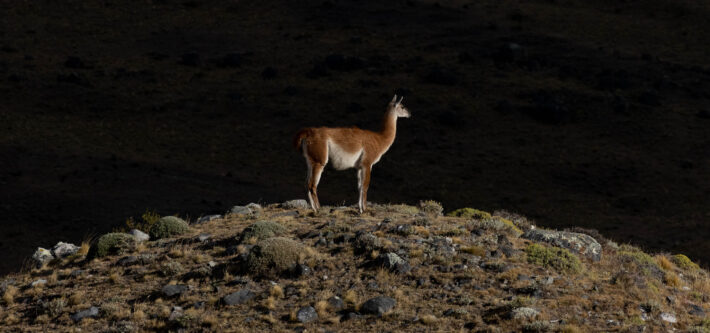
In addition to large mammals we saw many birds ranging from largest flying bird in the world by combined measurement of weight and wingspan, the Andean condor, to one of smallest owls, the Pygmy Owl
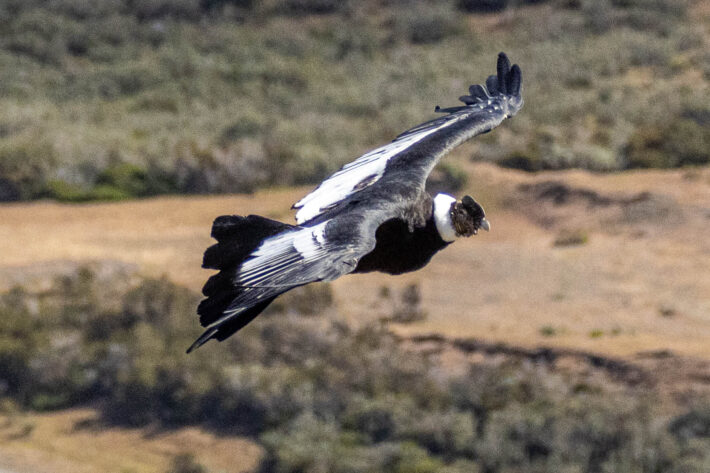
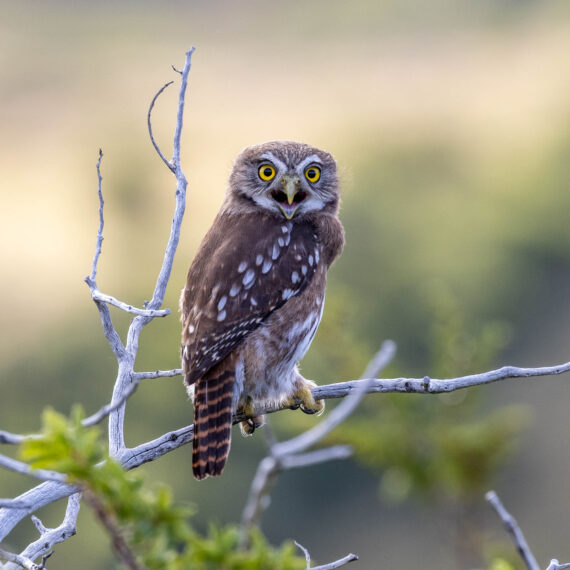
While the weather in Patagonia was windy, we dodged a bullet as back home they were experiencing an atmospheric storm with winds close to what we got, albeit with lots of rain. We have been lucky because the for the previous atmospheric storm that hit the Bay Area in October 2021 we were also traveling. However, we did get enough rain to generate numerous rainbows, a few which we managed to capture
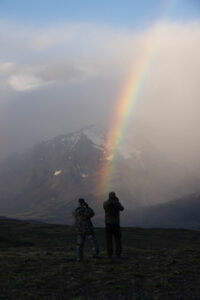
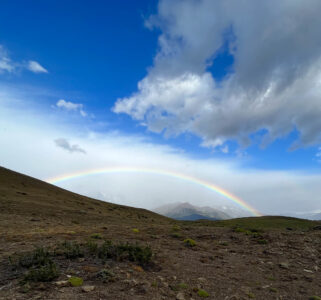
As you can see , while we were pretty low (one thousand feet in elevation), we were surrounded by pretty mountains.
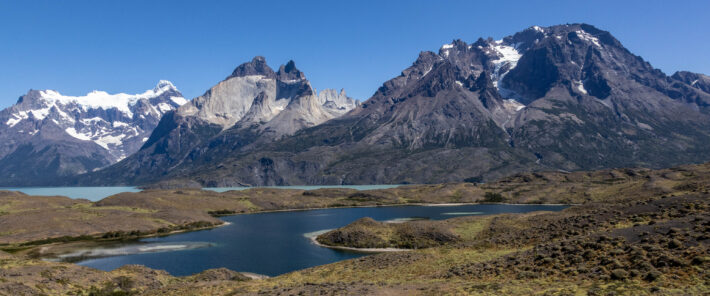
The most iconic of Torres de Paine mountains is theThree Towers, which is one many hikers and landscape photographers life bucket list. However being wildlife photographers we thought the best composition included wildlife like these flamingos: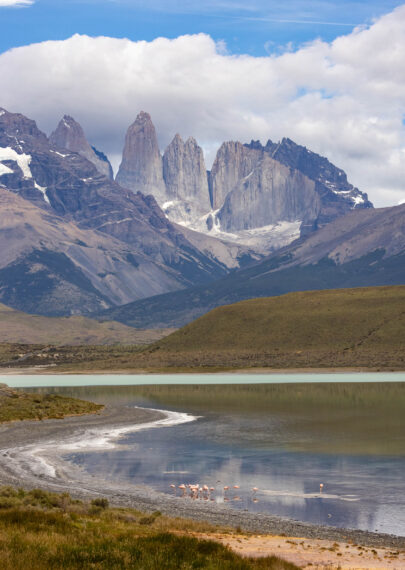
and of course the puma we were chasing.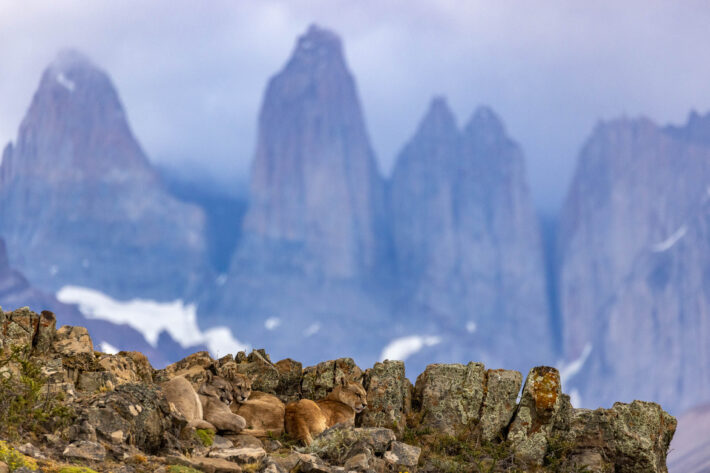
Some other wildlife we saw included the largest woodpecker in South America, the 14-18 inch tall Magellanic woodpecker, and the culpeo fox which is not really a fox, but more closely related to wolves and jackals. Its appearance resembles that of foxes due to convergent evolution.
And a Southern Crested Caracara, which looks like a hawk, behaves a vulture (scavenger) and actually is a member of the falcon family.
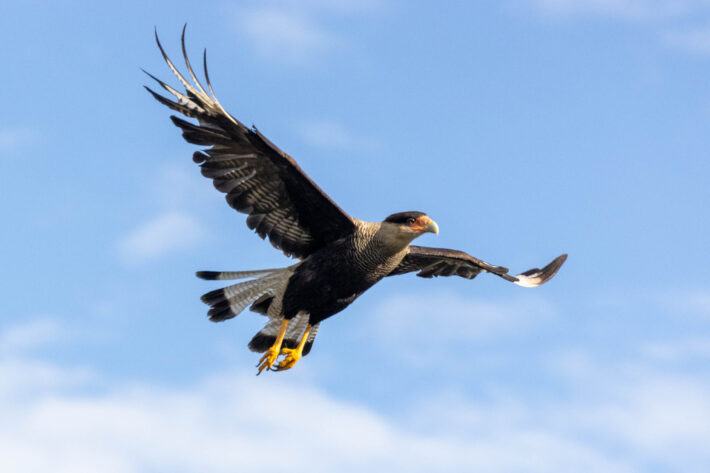
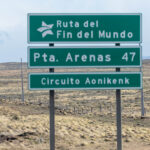
As we left Torres del Paine and headed south the sign said Rita del Fin del Mundo (End of the World Route ). While we had been a lot closer (we were still over 700 mile north of Antarctica) to the bottom of the world, it was close enough the we saw some king penguins and their nemesis, the leopard seal.
From the other end of our planet, we ran across North American beavers. 25 were imported into the area in 1950’s to start a fur trade. When that didn’t work, they were released and now number several hundred thousand, doing extensive damage to the forests in the area.
Time to go, next trip to Costa Rica.